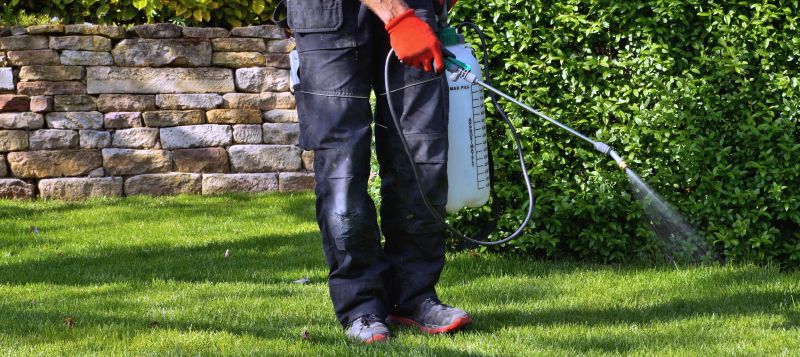Top Erosion Control Products To Protect Your Land Effectively
Discover leading solutions designed to prevent soil loss and maintain land stability with ease and reliability.
 Erosion control products are essential tools used to stabilize soil, prevent sediment displacement, and protect landscapes from the damaging effects of water and wind erosion. These solutions are widely applicable in construction sites, landscaping projects, roadways, and hillside stabilizations. Proper selection of erosion control products can help maintain soil integrity, reduce runoff, and support the longevity of various projects. From small-scale garden applications to large infrastructure projects, a diverse range of products is available to address different erosion challenges.
Erosion control products are essential tools used to stabilize soil, prevent sediment displacement, and protect landscapes from the damaging effects of water and wind erosion. These solutions are widely applicable in construction sites, landscaping projects, roadways, and hillside stabilizations. Proper selection of erosion control products can help maintain soil integrity, reduce runoff, and support the longevity of various projects. From small-scale garden applications to large infrastructure projects, a diverse range of products is available to address different erosion challenges.
Top Overall Option
Geotextile Erosion Control Fabric
Geotextile fabrics are versatile, permeable materials designed to reinforce soil, prevent erosion, and promote vegetation growth. They are available in various weights and strengths to suit different project requirements, offering a balance of durability and ease of installation. These fabrics can be used alone or in combination with other erosion control products, making them a flexible choice for many applications.
Types of Products For Erosion Control Solutions
Geotextile Fabrics
Permeable fabrics that reinforce soil and prevent erosion, suitable for various terrains.
Silt Fences
Barrier fences designed to trap sediment and control runoff during construction projects.
Erosion Control Mats
Biodegradable or synthetic mats that stabilize soil and support vegetation growth.
Riprap
Large stones or concrete pieces placed along shorelines or slopes to absorb water energy and prevent erosion.
Vegetative Blankets
Matting that encourages plant growth to naturally bind soil and reduce erosion.
Concrete Barriers
Rigid structures used to redirect water flow and stabilize slopes.
Drainage Swales
Shaped channels that direct water away from vulnerable areas, reducing erosion risk.
Gabions
Wire mesh cages filled with stones used to stabilize slopes and prevent washouts.
Mulch and Erosion Control Blankets
Organic or synthetic mulches that protect soil and promote vegetation establishment.
Plastic Netting
Mesh materials that secure soil and support plant roots in erosion-prone areas.
Sediment Basins
Depressions designed to collect and slow runoff, reducing sediment transport.
Stormwater Inlets and Filters
Devices that filter debris and sediments from runoff before it enters drainage systems.
Terracing Systems
Structural modifications that create level areas on slopes to reduce erosion velocity.
Erosion Control Wattle
Flexible, tubular barriers filled with mulch or soil to stabilize slopes and channels.
Flow Diversion Structures
Constructed features that redirect water flow to less vulnerable areas.
Soil Stabilization Additives
Chemical binders or organic amendments that improve soil cohesion and reduce erosion.
Popular Choices
Widely used for temporary sediment control during construction activities.
Commonly applied to slopes to promote vegetation and stabilize soil rapidly.
Popular for their versatility in reinforcing soil and supporting plant growth.
Frequently used along shorelines and embankments to dissipate water energy.
Chosen for their ability to establish plants quickly in erosion-prone areas.
Effective for slope stabilization and retaining walls in various projects.
Commonly implemented to manage surface runoff and reduce erosion velocity.
Popular for covering bare soil and supporting seedling growth.
Used extensively in construction sites to control sediment-laden runoff.
Often employed to reroute water away from vulnerable slopes.
Flexible barriers used for channel stabilization and slope protection.
Applied where durable, long-term erosion mitigation is needed.
Understanding the specific conditions of a site is crucial when choosing erosion control solutions. Factors such as soil type, slope gradient, water flow intensity, and project scale influence the most appropriate product options. Materials like biodegradable mats and geotextiles offer temporary stabilization, while more durable options such as concrete barriers or riprap provide long-term solutions. Combining multiple products often yields the best results, especially on complex terrains or extensive areas.
Proper installation and maintenance are vital for maximizing the effectiveness of erosion control measures. Ensuring that products are correctly placed, anchored, and inspected regularly can prevent failure and prolong their functional lifespan. Additionally, considering the ease of installation and compatibility with existing site conditions can streamline project timelines and reduce labor costs. Consulting with erosion control specialists can further optimize product selection and application techniques.
In summary, selecting the right erosion control products involves understanding site-specific needs, evaluating product durability and installation requirements, and planning for ongoing maintenance. Whether addressing minor landscaping concerns or large-scale construction stabilization, the right solutions can significantly mitigate erosion risks and protect valuable land resources.
Key Buying Considerations
- Site-specific conditions such as slope steepness and soil type influence product choice.
- Durability and lifespan of the product relative to project duration.
- Ease of installation and whether specialized equipment or skills are required.
- Compatibility with existing landscape or infrastructure features.
- Vegetation support capabilities for promoting natural stabilization.
- Temporary versus long-term erosion control needs.
- Cost-effectiveness considering installation, maintenance, and replacement.
- Environmental impact of materials used, especially for biodegradable options.
- Compliance with local regulations and construction standards.
- Availability of technical support or guidance from suppliers.
- Resistance to water flow and weather conditions typical of the site.
- Flexibility and adaptability to different terrain features.
- Ability to integrate with other erosion control measures for comprehensive coverage.
- Maintenance requirements and ease of inspection over time.
- Potential impact on existing drainage and water flow patterns.
